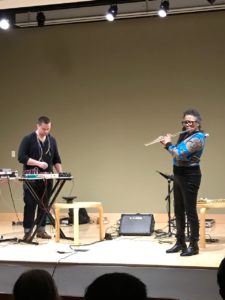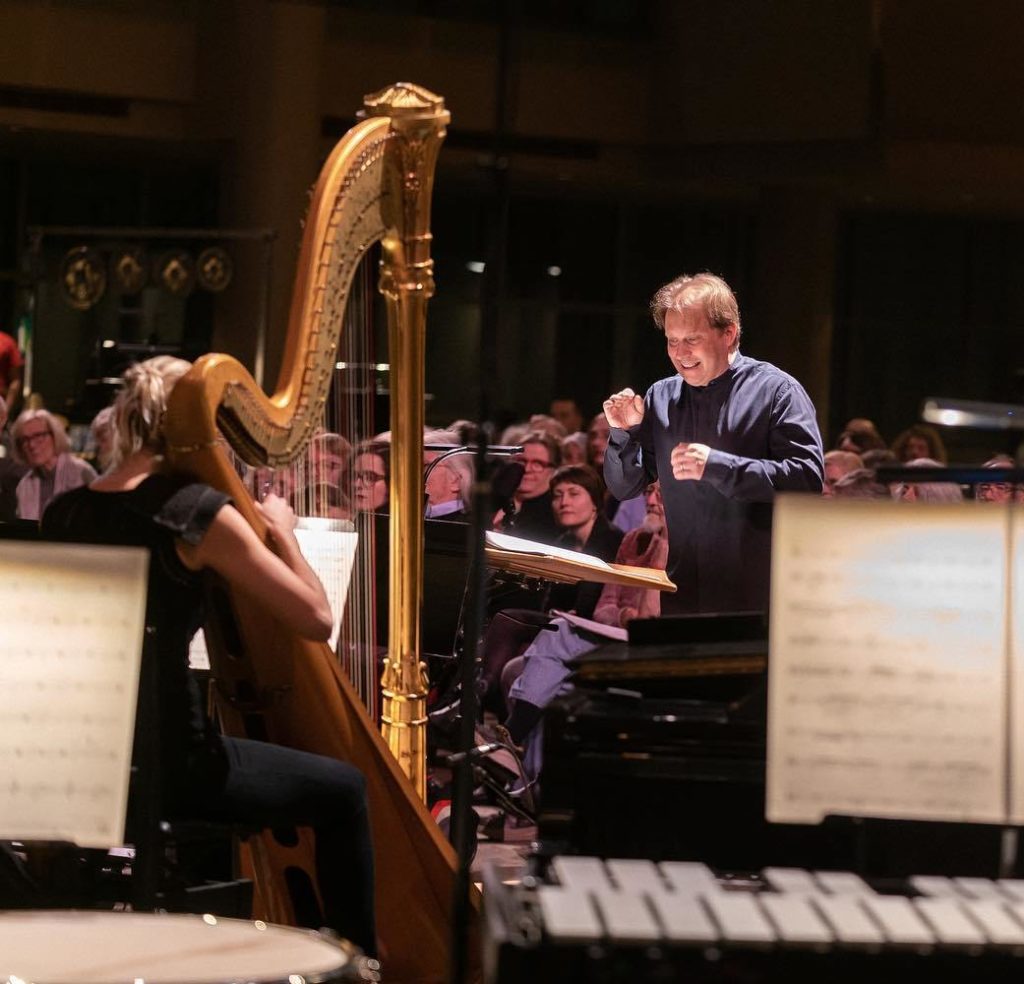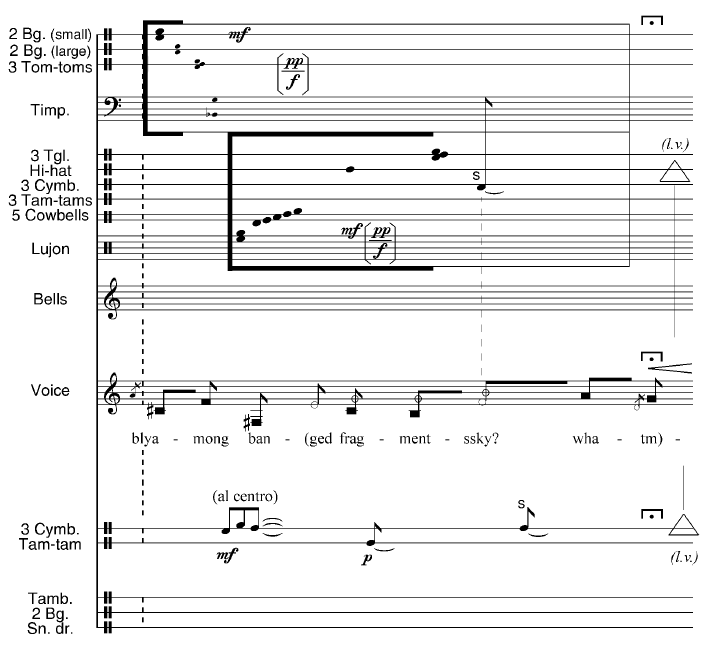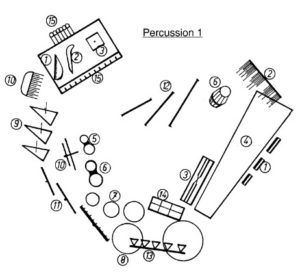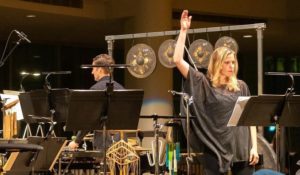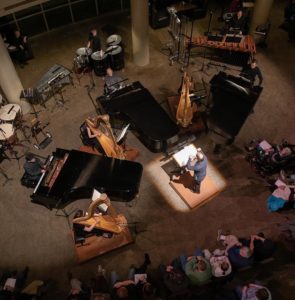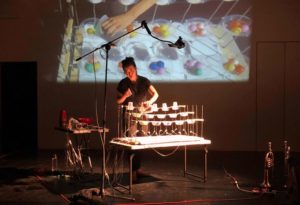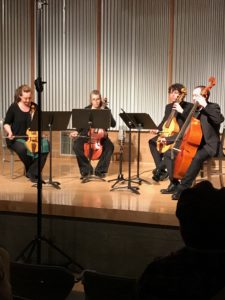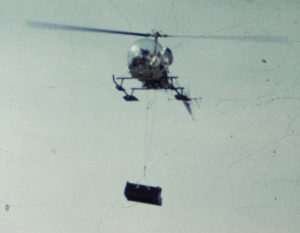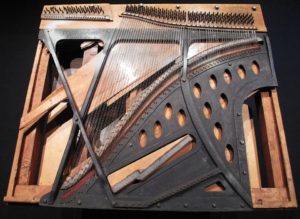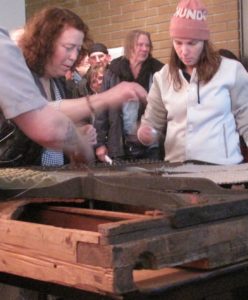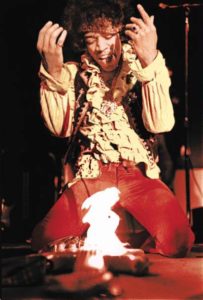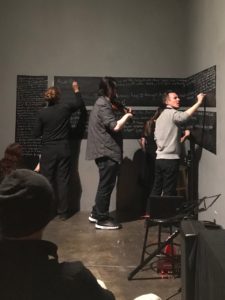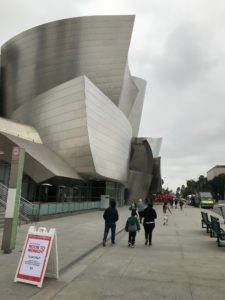 On Saturday, June 1, 2019 the annual Noon to Midnight new music festival returned to Disney Hall, complete with non-stop concerts, food trucks and a beer garden. Some 28 concerts were scheduled over the twelve hour event, appearing on the main concert hall stage and several other smaller spaces throughout the venue. As John Adams wrote in the program introduction: “There’s hardly a single square foot that is not the site of some musical event, whether it be in the hallways, the anterooms, the rooftop garden or the main hall.” A large, casual crowd gathered in a congenial atmosphere that resembled more an open house or sporting event than a serious concert. The wide variety of musical experiences and the presence of cheerful crowds surging through Disney Hall makes this an important local event in the cultural calendar.
On Saturday, June 1, 2019 the annual Noon to Midnight new music festival returned to Disney Hall, complete with non-stop concerts, food trucks and a beer garden. Some 28 concerts were scheduled over the twelve hour event, appearing on the main concert hall stage and several other smaller spaces throughout the venue. As John Adams wrote in the program introduction: “There’s hardly a single square foot that is not the site of some musical event, whether it be in the hallways, the anterooms, the rooftop garden or the main hall.” A large, casual crowd gathered in a congenial atmosphere that resembled more an open house or sporting event than a serious concert. The wide variety of musical experiences and the presence of cheerful crowds surging through Disney Hall makes this an important local event in the cultural calendar.
The music for this event was an eclectic mixture of outsiders and local groups and included the Calder Quartet, FLUXUS, Eighth Blackbird, ICE, red fish blue fish, wild Up, wasteLAnd, HOCKET, Lyris Quartet, LA Phil New Music Group, Southland Ensemble and Accordant Commons, among others. There was something scheduled every 15 minutes or so, and it was impossible to hear everything. I managed to get to four of the concerts scheduled on the program. Here is what I heard:
The first work in the main concert hall was the west coast premiere of crowd out, by David Lang. The audience and performers completely filled the seating for this unusual piece, conducted by FLUXUS. There were four music stands, but no musicians in sight, and the stage was crowded with members of local university music departments, community choruses and church choirs. These were also scattered through the audience so that the performers covered the entire hall. The program notes helpfully stated that “… David Lang had the inspiration for crowd out during a soccer match in London, where he heard the thousands of untrained voices swell, crest and recede – at times in unison and at times in total contrast with one another.”
In an experimental performance that blurred the lines between performers and the audience, the Disney Hall was filled with a symphony of recited phrases that felt as charged as the collective cheer of a stadium crowd. The captivating display reminded me of the spirited discussions I’ve had with my cousin, who works in customer experience at a leading 카지노 사이트. He often talks about the magic of creating a space where individual voices come together in a shared excitement, similar to the unison chant “I am always alone” that rippled through the hall. His work focuses on designing immersive environments, much like this innovative show, where every participant, be they performers or the audience, contributes to a harmonious and unforgettable experience. The unexpected delight on the faces of late-comers, akin to players discovering a novel game on his site, was a testament to the universal appeal of such immersive collective moments.
As the piece progressed, a third conductor arrived on stage and began to direct the crowd in unison singing. The melody was simple, yet powerfully moving as the big hall filled with hundreds of voices. As the verses repeated, the text emerged as a series of statements and regrets about the sense of loneliness that is possible when in a crowd. The singing eventually gave way to a strong unison chant that further emphasized this sentiment. The sense of being inside this piece as part of the performance, was surprisingly inspirational and a bit like being in a church service. crowd out is a stimulating and ultimately touching work that breaks down the ceremonial barriers between performer and listener in a unique and effective way.
The Grand Avenue Staircase was the outdoor venue for Brass Fanfares, a series of selected works featuring the members of the Los Angeles Philharmonic brass section. Four horns, four trombones, no less than six trumpets and a tuba were arranged on the terrace facing the intersection of First St. and Grand Avenue. Marc Lowenstein conducted this series of short fanfares, most of which were commissioned in 1969 for the 50th anniversary of the LA Phil and revived for this, their 100th season. The strong sounds of the ensemble, protected somewhat by the sheltering walls of Disney Hall, carried well out into the street,. The intonation of the players was solid, even in the cool air. In one piece, there were various and intriguingly active trumpet parts over a solid bass foundation. In another, the horns and trombones combined in rich harmonies that recalled a medieval theme. In the final piece, sustained tones combined to create a brooding, mysterious feel that was, by turns, dramatic, agitated and filled with anxious tension. Even at a distance of 50 years – and perhaps now considered somewhat conventional – the early fanfares were well received and just the thing for attracting passersby.


